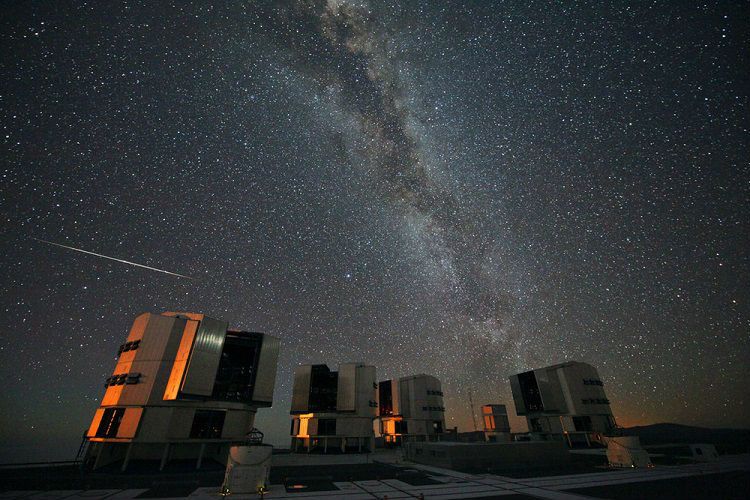1,480 light years from Earth is a strange star cataloged as KIC 8462852, known unofficially as Tabby's Star. This star made headlines last year which varied from "Something—we’re not sure what—is radically dimming a star’s light," to "The strange star that has serious scientists talking about an alien megastructure," and everything in between.
Since the news broke about this mysterious star in October of 2015, natural explanations to the observed phenomena have been continually ruled out—except for the possibility that the star's weird light curve is being caused by a giant swarm of comets. Surprisingly, the 'alien megastructures' hypothesis has also remained steadfast as a possible explanation—if you can accept the idea that technologically advanced aliens exist in our galaxy (and there isn't a shred of evidence for that thus far).
After 8 months of attempting to formulate an explanation, it's ultimately come down to a matter of Comets vs Aliens (which sounds like a great name for a movie). And I bet you can guess which side has been winning the internet.
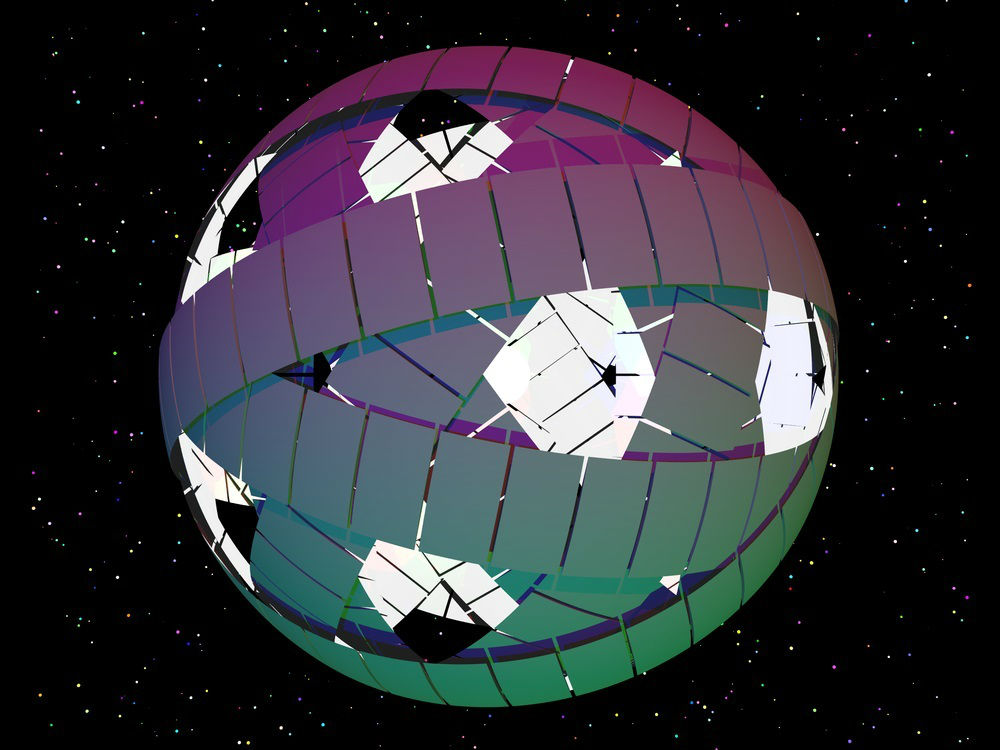 This is a diagram of what an alien megastructure could look like. Image: Wikimedia Commons.
This is a diagram of what an alien megastructure could look like. Image: Wikimedia Commons.
The problem is that real science (that is, the method of formulating competing hypotheses until only the best possible explanation remains) has been hijacked by belief—and some people just really want to believe. Belief means answers. And not having an answer is unacceptable in our modern True or False, Yes or No culture.
The search for alien civilizations has been an obsession of our species for over a century. The assumption that other people (read: human beings) may reside on other worlds in the cosmos, such as the Moon, dates back at least to ancient Greece. But as our understanding of the cosmos and its fundamentally inhospitable environment has continued to evolve, the idea that some sort of super-advanced (read: god-like) alien civilization may exist out there has gradually become embedded within the public consciousness.
We've been projecting our own possible future onto these mythical beings. We wonder howwe would live out there, what we would be able to accomplish in thousands or millions of years. And that's where the idea of a Dyson Swarm, a type of technological megastructure, comes into play: if we had the capability to do so, perhaps we would build a gigantic swarm of solar-power collecting habitats in orbit around a star.
And it does make sense: a swarm of solar-powered habitats around a star would be a logical and efficient way to populate the cosmos with some hundreds of billions of people. And if it could work for us, perhaps it could work for aliens too.
Then, last year, some phenomena is observed around a distant star that fits into into what we would expect to see if a sufficiently advanced alien civilization had just built something similar to a Dyson Swarm. And when most of the natural explanations are ruled out or deemed inadequate, things start to get interesting. The stage has been set for a long time for something like Tabby's Star to capture our collective imaginations.
Here are the Observations:
In 1,580 days of Kepler observations, KIC 8462852 experienced multiple events in which its light curve (the amount of light given off by the star) dipped by less than 1%. But there were two events in which the star's light dipped by more than 15% and 20%, respectively.
Dips like this typically occur when an orbiting planet transits its parent star, thus blocking some of the light we observe through telescopes. Detecting these dips in starlight is how we've been able to find thousands of exoplanets (so far) orbiting other stars. But this one is special. This one definitely doesn't look like a planet.
This is what we normally see when a planet transits a star:
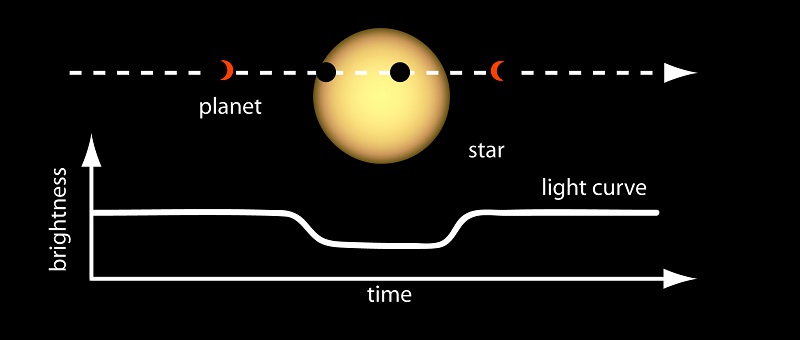 A typical dip in starlight captured by Kepler signifies a spherical planet. Image: NASA Ames.
A typical dip in starlight captured by Kepler signifies a spherical planet. Image: NASA Ames.
Most observed dips in starlight are periodical (for example, Earth would appear to transit the Sun once every 365 days) and have a uniform 'curve' in the data. But the light curver for KIC 8462852 shows a sporadic dimming of light at irregular intervals. Even more puzzling is the fact that, beginning around day 1500 of Kepler observations, the star dips in brightness by more than 20% in chaotic fashion, indicating an object of highly irregular proportions.
Here's the data from KIC 8462852. Dips in starlight don't typically look like this:
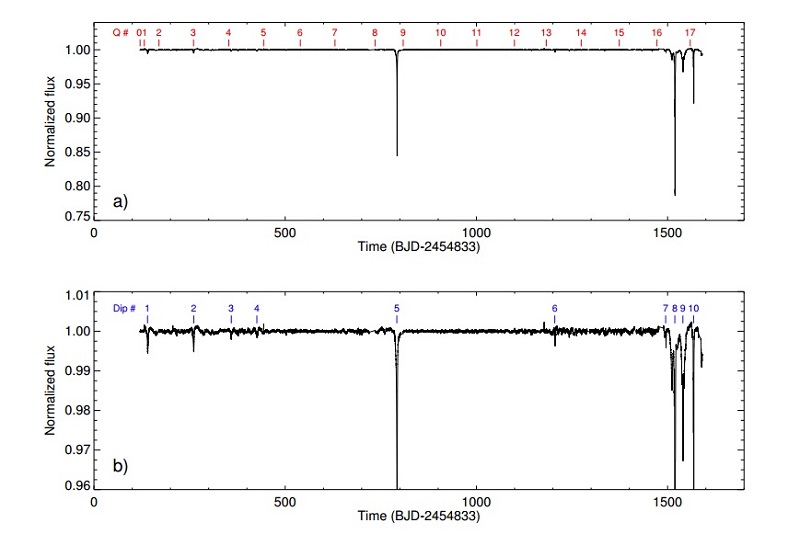 KIC-8462852 is a long way off from your standard Kepler light curve. Image: T. S. Boyajian et al.
KIC-8462852 is a long way off from your standard Kepler light curve. Image: T. S. Boyajian et al.
Also, we normally only see a star's brightness dip by about 1% when a planet moves in front of it. For smaller stars with larger planets, that percentage can be a bit higher—perhaps a few percent. But a dip of 20% is simply impossible for planet-sized object, and unprecedented when compared to the rest of the Kepler data.
Here's an example of what our own Solar System would look like from a distant telescope:
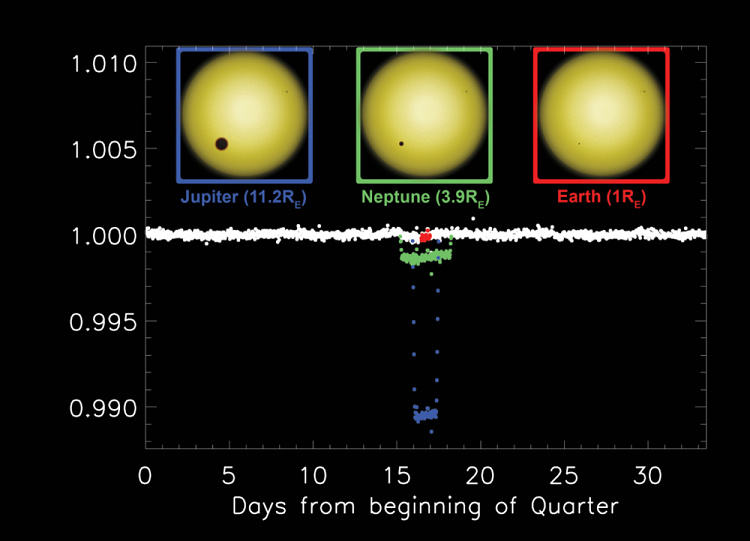 Comparison of light curves that could be caused by planets in our Solar System. Image: Planet Hunters.
Comparison of light curves that could be caused by planets in our Solar System. Image: Planet Hunters.
Notice that it takes a planet the size of Jupiter to block out 1% of our Sun's light. And an object as large as Earth is barely detectable. And even though some planets can have a lot more mass than Jupiter (up to 13 times Jupiter's mass before they're classified as a 'brown dwarf' and begin fusing some elements), their radius does not increase proportionately.
The more mass a planet accumulates, the more gravity pulls that mass inwards, resulting in similarly-sized planets that may have widely varying masses. For example, Saturn is 83% the width of Jupiter, meaning that it could block about 0.8% of our Sun's light as opposed to Jupiter's 1%. But Saturn only has about 30% as much mass as Jupiter does, despite their similar radii. When it comes to gas giants, looks can be deceiving.
 These large chaotic dips in the light curve defy simple explanation. Image: T. S. Boyajian et al.
These large chaotic dips in the light curve defy simple explanation. Image: T. S. Boyajian et al.
These large chaotic dips in the light curve defy simple explanation.
Image Credit: T. S. Boyajian et al
The chaotic nature of this particular dip near the end of Kepler's mission clearly shows that the transiting object in question is definitely not a planet. Numerous other theories have been ruled out so far, so what could this thing be?
Here are the hypotheses:
Since the first paper on KIC 8462852 was published in 2015, numerous possible explanations have been ruled out. Among those theories have been: an accretion disk (planet-forming material) surrounding the star, a major impact between two planetary bodies, a large asteroid impact, a large planetary ring system (much larger than Saturn), and a cloud of interstellar dust/debris.
Further observations of the Infrared spectrum of the star have ruled these possibilities out. It's definitely not dust or debris or any one large physical body. This has left scientist with two possible hypotheses (as of now):
1. A large comet-like object, or a group of many comets in formation, that are breaking apart while in an elliptical orbit around the star. This would lead to a chain of icy material orbiting the star, which could possibly explain the chaotic light curve observed in the Kepler data.
2. Artificially constructed objects in orbit around the star, perhaps a modified Dyson Swarm designed to collect solar energy.
To be fair, neither of these options provides a good explanation for the observed phenomena around KIC 8462852. They are merely looked at as possibilities, thought experiments that precede a more robust theory being established. In fact, there is still a third, more probable option that has yet to be considered because... well, because we don't know yet:
3. Some natural phenomena that has not been previously observed, or which we can't yet infer based on currently available data.
It must be said that option #3 is far more likely. #1 would require a very strange set of circumstances in order to fit in with the observed light curve, and #2 is just a bit too much of a leap. Or is it?
The facts about Comets vs Aliens:
The last large dip observed at KIC 8462852 was very irregularly shaped, signifying that there must be some very irregularly shaped object causing the dip in light. This shape in the light curve could be explained by natural phenomena in some strange configuration, but it could also be explained by structures that are artificial in nature.
What it comes down to, with the current data that we have, is Comets vs Aliens. We can't get into a discussion of which is more likely, because it depends largely upon information that we don't have. We don't know how prevalent life is in the Universe, and we don't know the prevalence of intelligent life that goes on to become a successful space-faring civilization.
But we also don't know enough about comets to infer whether or not comet swarms are a common occurrence around other stars. To make things more complicated, a follow-up study has estimated that this group of comets must be composed of either a) thirty 100-kilometer radius comets, or b) three hundred 10-kilometer radius comets.
We've found evidence of comets around other stars before, but nothing on the scale being suggested here with KIC 8462852. This makes Comets almost as unlikely an explanation as Aliens. Almost.
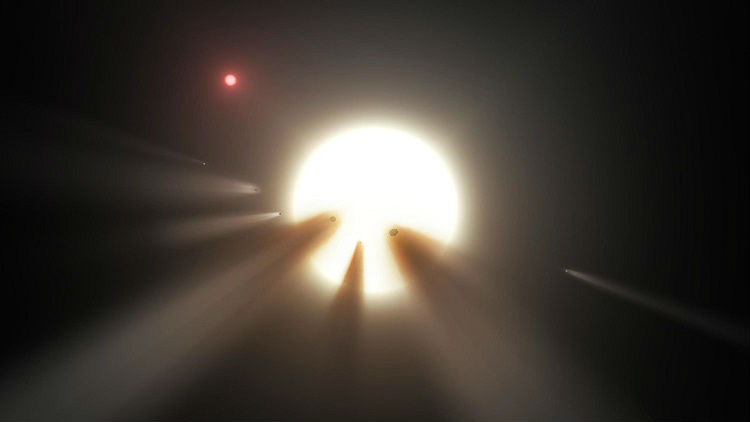 It would take a huge swarm of comets to explain Tabby's Star, but it's plausible. Image: NASA/JPL-Caltech.
It would take a huge swarm of comets to explain Tabby's Star, but it's plausible. Image: NASA/JPL-Caltech.
It has been theorized that stars passing closely to one another may disrupt an otherwise-stable cloud of comets surrounding either star, sending many them hurtling towards their host stars on suicidal trajectories. Such an event could cause these disrupted comets to break apart and disintegrate over a relatively short time (in cosmic terms), and this could be causing the dip in light from KIC 8462852. Could be.
Some four billion years ago, it's thought that a passing star may have resulted in Earth being bombarded by a large volume of comets over several million years, an era known in planetary science as the Late Heavy Bombardment. But we don't have any hard data related to how often events like this may occur, or how commonly they occur around other stars (or if other stars even have giant swarms of outer comets similar to our own).
As of now, the variables are too unknown. We don't know anything about alien civilizations (if they exist, how prevalent they are, etc) and we don't know how often large swarms of comets take a dive towards their host star in close formation. No matter how much we debate these points, we won't arrive any one scientifically accepted answer. At this point, Comets vs Aliens only works as a thought experiment. We need to collect more data.
That's why we need Kickstarter:
Tabby Boyajian, lead author of the first paper published about KIC 8462852 (and the unofficial namesake of "Tabby's Star"), has said that the vast majority of government grants are given to projects that have a clear outcome—either a positive result that tells us something important, or a negative result that also tells us something important.
The problem with this problematic star is that the outcome is uncertain. And that's problematic for any proposal seeking government funding, even if it involves aliens... but probably especially if it involves aliens.
With the right resources, this mystery could be solved in a relatively short time, perhaps just a few years of observations—but it could also take decades (or longer) before an adequate explanation can be established. We just won't know either way unless we collect more data.
The team is looking for $100,000 dollars through their Kickstarter campaign to secure enough time at a private observatory in order to observe KIC 8462852 for another year. During that year, they may or may not see another large dip event.
 Observatories around the world will be ready to look at the next dip. Image: ESO/S. Guisard.
Observatories around the world will be ready to look at the next dip. Image: ESO/S. Guisard.
If there is another large dip event, having dedicated observatory time will allow them to conduct a detailed spectral analysis of the star's light that will allow them determine, with some accuracy, the chemical composition of the light-blocking object.
With that spectral data, scientists will be able to infer more about this mysterious star, which could discredit one or more hypotheses about what's going on (or lead to an alternative hypothesis that makes more sense).
Food for thought:
Long before the first exoplanets were discovered, we were pretty damn sure that our Solar System wasn't the only place in the Universe that hosted planets. And since the launch of Kepler, we've determined that most, if not all, of the stars in the observable Universe do host an array of orbiting exoplanets.
Some of these exoplanets are located within the 'Habitable Zone' of their host stars, meaning that they're likely to support liquid water on their surface and may be ideal locations for life (as we know it) to arise and evolve.
If life does evolve on other planets, it's natural to assume that some life will eventually evolve into an intelligent species that develops advanced technology, such as spaceflight. It's also natural to assume that our own species will eventually be able to achieve anything that we can imagine to be possible for a more advanced alien civilization—and this includes constructing a Dyson Swarm around a star.
As long as we don't go extinct or the world doesn't end, it may even be inevitable.
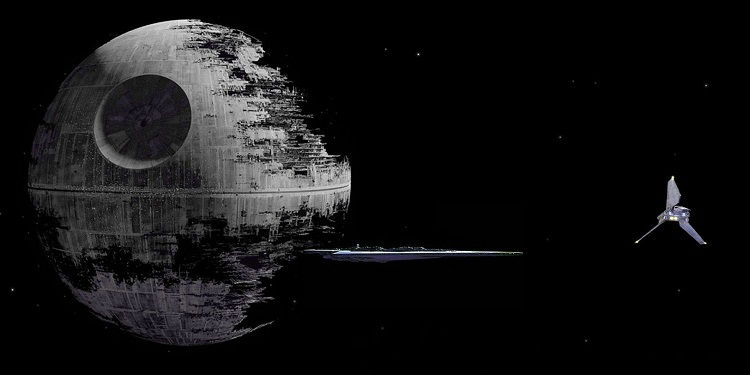 Perhaps a partially constructed Death Star could explain Tabby's Star? Image: Star Wars: Episode VI – Return of the Jedi (1983).
Perhaps a partially constructed Death Star could explain Tabby's Star? Image: Star Wars: Episode VI – Return of the Jedi (1983).
If this reasoning is valid, then it's plausible to adopt the idea that advanced alien civilizations most likely do exist somewhere, and that they do occasionally build gigantic artificial structures designed to collect energy around stars.
This certainly doesn't mean we've actually found evidence of aliens—it would still be highly unlikely to have located a Dyson Swarm (or any alien construct) in such a small sample size (Kepler has only sampled about one millionth of the available stars in our galaxy).
But the data collected thus far is definitely compelling.
Further reading: "If Intelligent Aliens Exist, Where Are all of their Space Probes?"
Sources:
- Boyajian et al: "Planet Hunters X. KIC 8462852 - Where's the Flux?"
- Massimo Marengo, Alan Hulsebus, Sarah Willis: "KIC 8462852 - The Infrared Flux"
- Eva H. L. Bodman, Alice Quillen: "KIC 8462852: Transit of a Large Comet Family"

